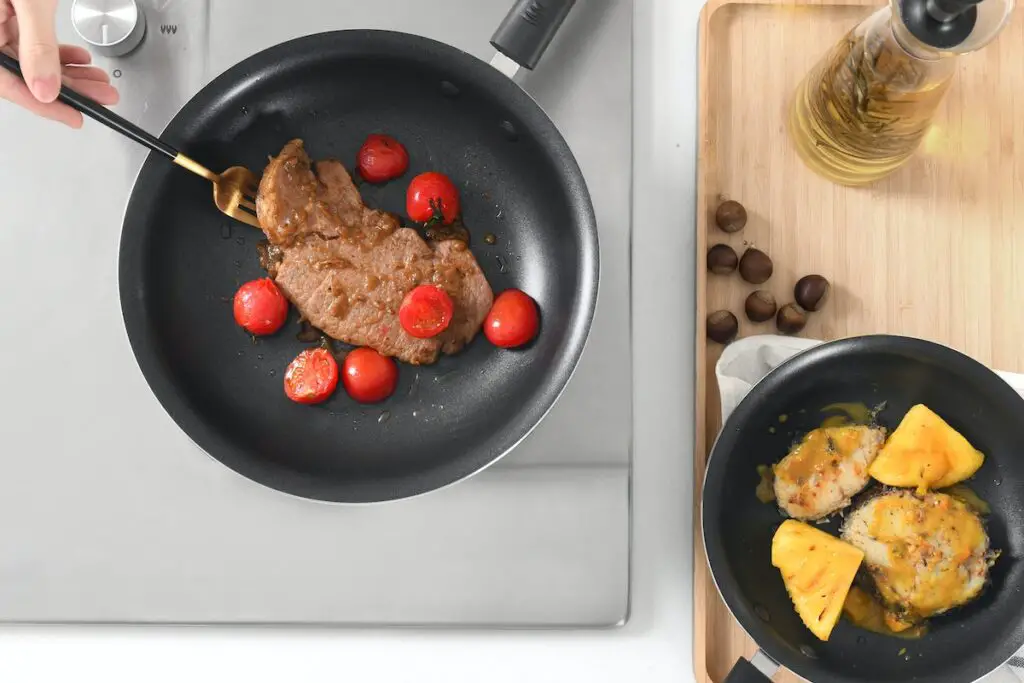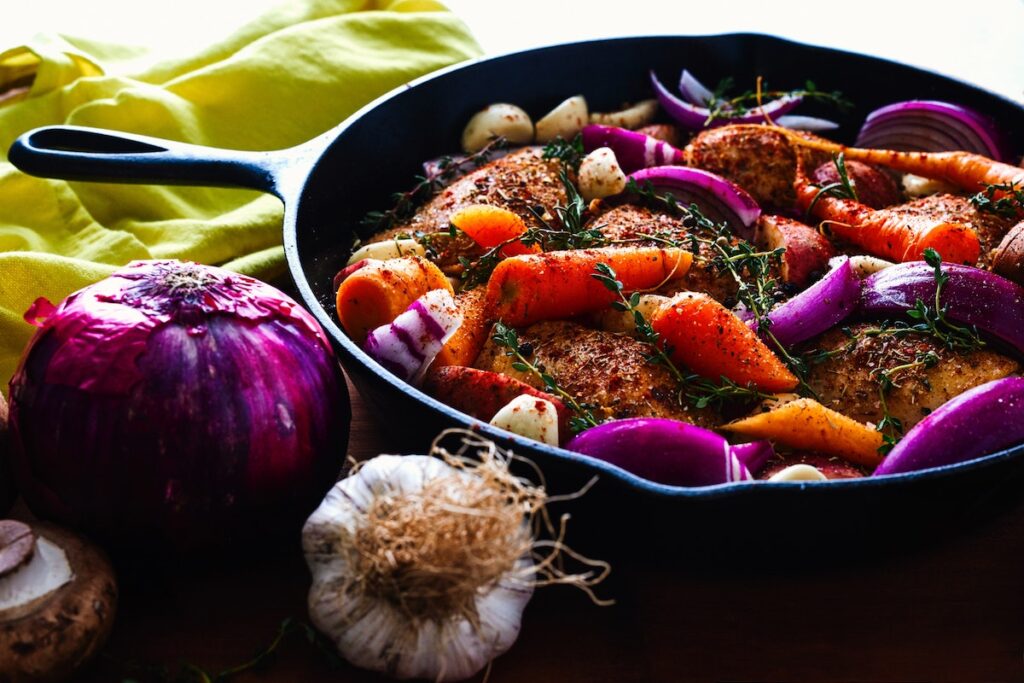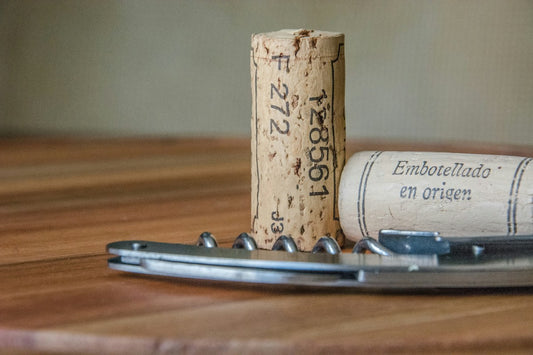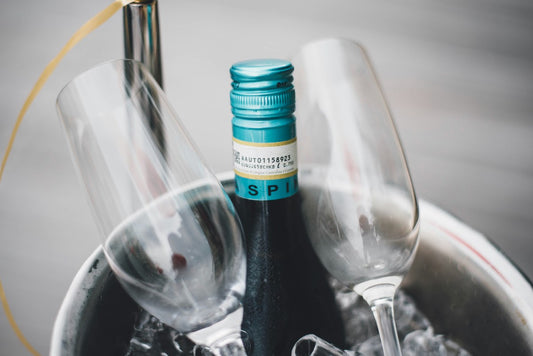French Skillet vs Frying Pan – What’s The Difference?
Norah Clark
French skillets and frying pans can share many similarities in size and material. However, the main difference lies in the shape of their sides. Frying pans have sloping lower sides, whereas French skillets have straighter and higher sides, giving them a more luxurious appearance.
Pans are an essential tool in any kitchen, but with so many options available, it can be overwhelming to determine their uses and which ones are the best fit. The various sizes, shapes, and coatings can make it difficult to choose.
However, there’s no need to worry because we’re here to help you. French skillets have recently gained popularity in American kitchens, but many people are unfamiliar with them. After all, a pan is a pan, right?
This article will provide an in-depth comparison of fry pans and French skillets, including their designs and uses, so you can understand the differences between them.
French Skillet vs Frying Pan – What’s The Difference?
The main difference between fry pans and French skillets lies in their sides. Fry pans have low-sloping sides, allowing you to flip and toss food items but limiting their capacity for holding more liquid or food.
In contrast, French skillets have higher and straight sides, allowing you to cook more food but making it harder to flip.
French skillets are perfect for cooking steaks and other meats that require high temperature and char.
Fry pans come in a greater variety of sizes, making it easy to adjust to the food being cooked, whereas French skillets are designed to handle larger quantities of food.
Both pans are typically made of stainless steel, but fry pans often come with non-stick coatings, while French skillets do not.
This means that when cooking non-stickable items like crepes, you may have a more challenging time on the typical stainless steel surface of a French skillet.
| Frypan | French skillet | |
| Size | 6-16 inches | 8-12 inches |
| Bottom | Flat bottom | Flat bottom |
| Sides | Low sloped sides | Straight or slightly rounded or sloping sides |
| Handles | One long handle and, at times, one short grab handle. | One long handle and, at times, one short grab handle. |
| Materials | Aluminum, stainless steel, or ceramic, with PTFE non-stick coating | Stainless steel is also known as (rarely) casting iron |
| Lid | No lid | No lid |
| Utilizes | Frying small portions of food and flipping them over can contain small quantities of liquid and food. | Foods that are cooked in large quantities can hold huge amounts of liquid and food. |
Frying Pan
Let’s begin with the most common term: frying pans. They are an incredibly versatile piece of cooking equipment in any kitchen, available in various sizes ranging from 6 to 16 inches, with 12 inches being the most common.
The size of the pan defines its purpose to some extent. For example, a 6-inch skillet is suitable for frying an egg, while a larger pan is necessary for frying multiple eggs simultaneously or creating stir-fry or shallow fry dishes.
Frying pans have flat sides that distribute heat evenly. The low sides also act as a barrier to prevent liquid from spilling out.

The sides are usually only 1-2 inches high, as the purpose of the pan is to fry food, not simmer it.
Most of these pans have a long handle, making it easy to move the pan on and off the stove. However, larger frying pans may include a smaller grab handle to carry the weight.
Frying Pans Don’t Come With Lids
If your pan has an unsealed lid, it’s likely a new type of pan, such as a sauté pan or a universal non-stick pan.
When it comes to the materials used in frying pan production, stainless steel is the most commonly used, although ceramic and aluminum pans are also available. Stainless steel is an excellent anti-corrosion metal that distributes heat well and is very durable.
As the market shifted towards non-stick PTFE-coated pans, the design of frying pans began to change. Stainless steel frying pans with non-stick coatings are now readily available.
Ceramic-based pans are also popular due to their non-stick and chemical-free surfaces, but they may not last as long and can be prone to breakage or chipping.
Fry pans are specifically designed for frying and can be used to fry almost anything with less oil than deep-frying. They can also be used for other cooking methods and are versatile enough to replace other pots.
Frying pans are also useful for toasting nuts and seeds, melting chocolate, and cooking pancakes.
It’s important to note that frying pans should not be confused with cast iron skillets, which are a distinct type of cookware. To learn more about the differences between skillets and frying pans, check out our post dedicated to the topic.
French Skillet
The French skillet is very similar to a frying pan, with only a few minor differences that can make a huge difference in the kitchen.
French skillets also come in different sizes, but they are typically much smaller, ranging from 8 to 12 inches.
They are designed with a flat base to ensure excellent heat transfer and a larger surface area for faster and more simultaneous cooking.

The sides of a French skillet are taller than those of a typical frying pan, with sides about 2 inches steep (depending on the dimensions of the skillet). While they are usually straight, some French skillets have slightly rounded or sloped sides.
This design allows the pan to accommodate a greater amount of fluid and food, and the slightly sloped ones make it easier to toss and flip your food.
The French skillet has an extended handle on one end and often a grab handle on the other, functioning the same way as a skillet’s handle and making it easy to move around.
Although “skillet” is in the name, these vessels are not made of cast iron but instead of stainless steel, just like frying pans.
French skillets can also have non-stick coatings like frying pans, but this is less common due to their straight edges.
The cooking vessels are used similarly to frying pans, mainly because they can hold more liquid.
The following is a side-by-side comparison highlighting the differences and similarities between the two pans.
French Skillets and Frying Pans Are They Interchangeable?
The answer to whether French skillets and frying pans are interchangeable is not straightforward as it depends on what you’re cooking.
In many cases, you can use a frying pan and a French skillet interchangeably. For example, you can use both for cooking eggs, sautéing vegetables, searing meats, and making thick sauces.
However, the issue arises when the pan you’re using is designed for a specific purpose. For instance, a stainless steel French skillet is not suitable for cooking crepes as effectively as a non-stick frying pan since the crepes will stick to the uncoated flat bottom, making them difficult to flip.
On the other hand, the French skillet is excellent for frying large quantities of food or making stews and sauces that require simmering. These dishes are challenging to cook in a frying pan, which cannot hold excess moisture, and the food may easily fall out of the pan. Examples of such meals include risotto and paella.
While there are instances where you can interchange these two pans, for more specific tasks, there aren’t any.
What Is A French Skillet? Is It A Saute Pan?
There is often confusion when comparing saute pans, fry pans, and French skillets. A French skillet can be described as a combination of a saute pan and a frying pan.
Saute pans have straight sides and usually come with lids. French skillets, on the other hand, have slightly sloped sides and are typically smaller in size. They also do not usually come with a lid, unlike saute pans.
While saute pans are designed to retain moisture and help steam vegetables, French skillets are better suited for frying and cooking dishes that require larger surface areas.
FAQs
Is a frying pan and a skillet the same?
No, a frying pan and a skillet are not exactly the same. Both are made of stainless steel, but their main difference lies in the height of the sides. Fry pans have lower sloping sides for easier flipping, while French skillets hold higher straight sides for more food or liquid.
What is the benefit of a French skillet?
The benefit of a French skillet is that it is ideal for frying large quantities of food or making stews and sauces that require simmering. Its higher straight sides make it easier to cook with more liquid, while its broader base allows for even heat distribution. French skillets are versatile and can be used for various cooking tasks.
Summary
In conclusion, while French skillets and frying pans are made of stainless steel, the difference in their design lies in the height of their sides.
The lower sloping sides of fry pans make them ideal for flipping food, while the higher straight sides of French skillets make them perfect for cooking large quantities of food or making stews and sauces that require simmering.
It is important to consider the design of the pan when cooking specific food items, but generally, these pans are interchangeable.
Overall, French skillets vs frying pans are versatile kitchen tools that can be used for a wide range of cooking techniques with less oil than deep-frying.










